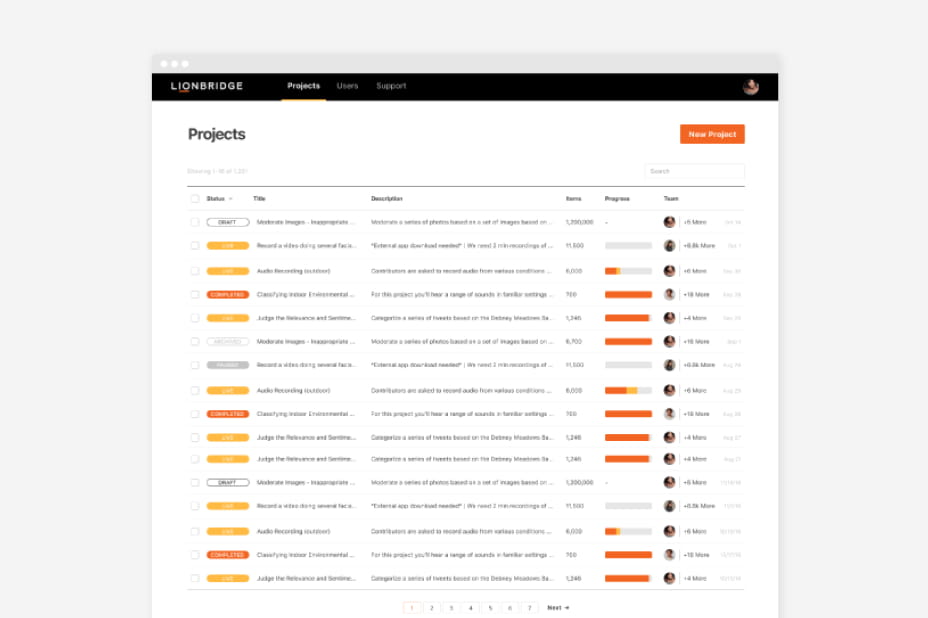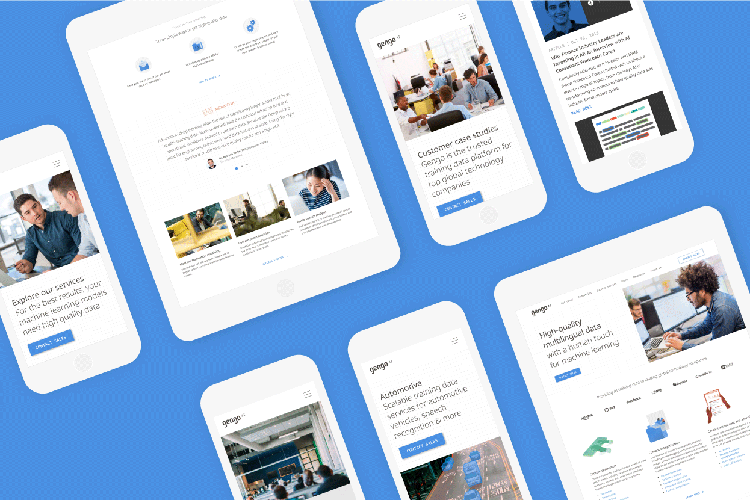Overview
As soon as a translator working with Gengo completes, submits and has their work reviewed, they will receive their GoCheck score – an aggregate score between 1.0–10 that signifies the quality of their translations, known internally as a Translator Quality Score (TQS). As the company was undergoing a plan to update the way we calculated a TQS, we then wanted to improve the visibility of a translator’s score and their professional advancements.
The health of a translator’s GoCheck score is their gateway to working with Gengo, however the score’s method of calculation has historically been seen as unclear and contentious from our community. This has consequently affected areas of translation quality and caused a heightened sense of caution from translators; remaining a persistent support issue. Knowing this, I was particularly set upon ensuring the design decisions made should advocate for transparency and translator education.
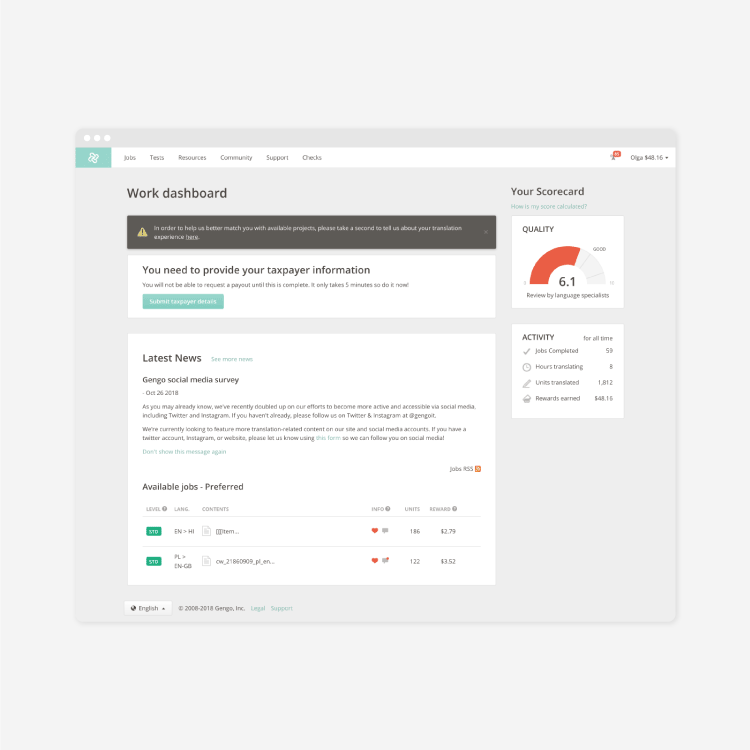
The problem we were facing were twofold; translators feeling the TQS calculation hard to understand, compounded with the difficulty in accessing their work history that dissuaded improvement.
Our ops team were also reporting on a slew of other quality issues, including:
- Translators repeatedly making the same errors;
- Not trusting Language Specialists’ feedback;
- Not knowing when they might get demoted;
- And not truly knowing what a ‘good’ score was, causing unnecessary anxiety
It was also likely that translators weren’t reading/missing their GoCheck feedback as it was only getting sent out via email at the time.
Research
I interpreted this brief as one that needed a number of small, but intentional UI changes that made the current scorecard function better as a key component on a translator’s dashboard. Implementing lightweight changes where possible was also preferable from a back-end engineering perspective–where we were wrangling an older and unwieldy codebase.
As a longstanding brand designer with the company, this was one of my first UX projects and logged (translator-facing) experiences I was involved in as a design lead. I set out to redesign not only the scorecard to improve its functionality but to also introduce a section where translators could—for the first time—review their work history. I carried out prototyping and user testing to validate our hypothese before implementation.
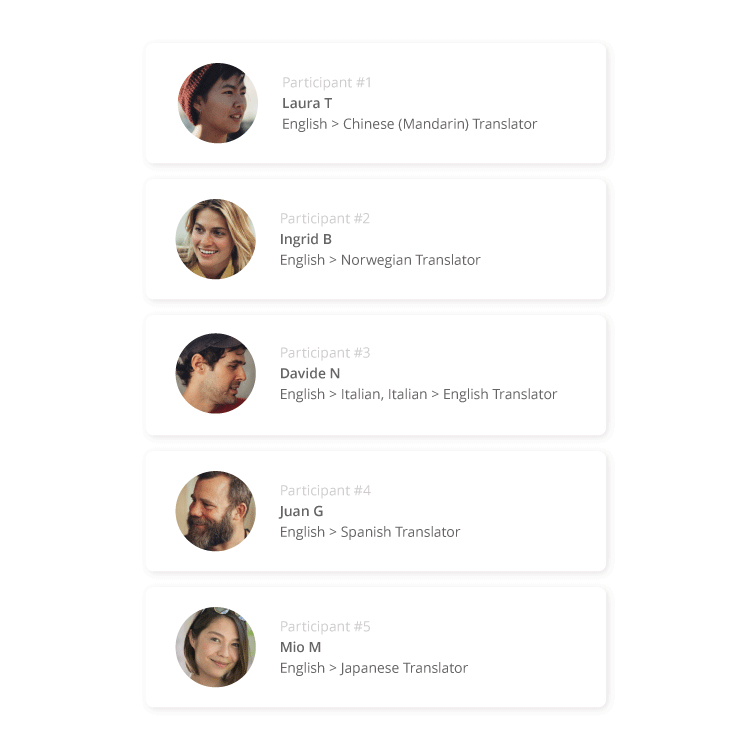
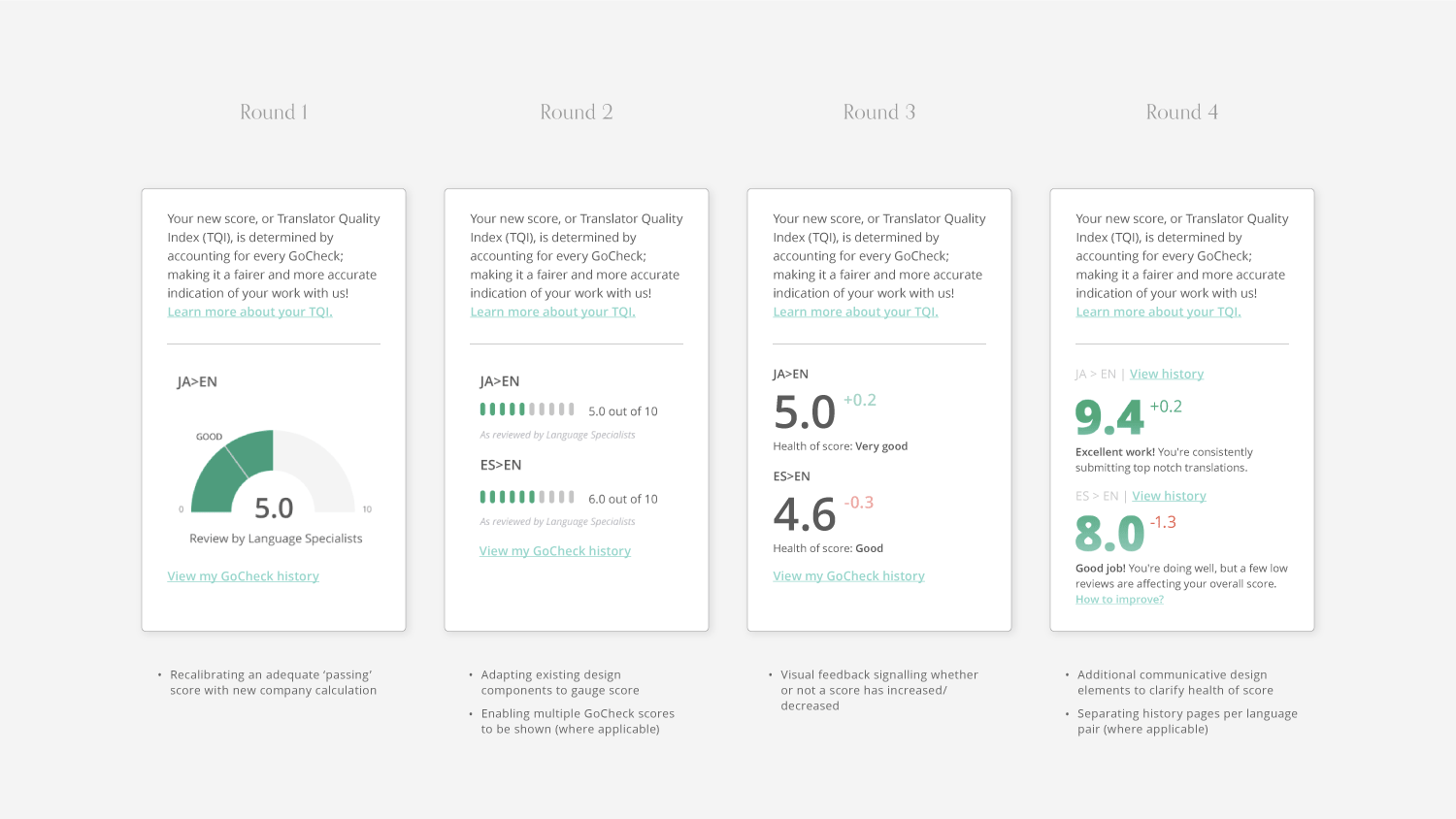


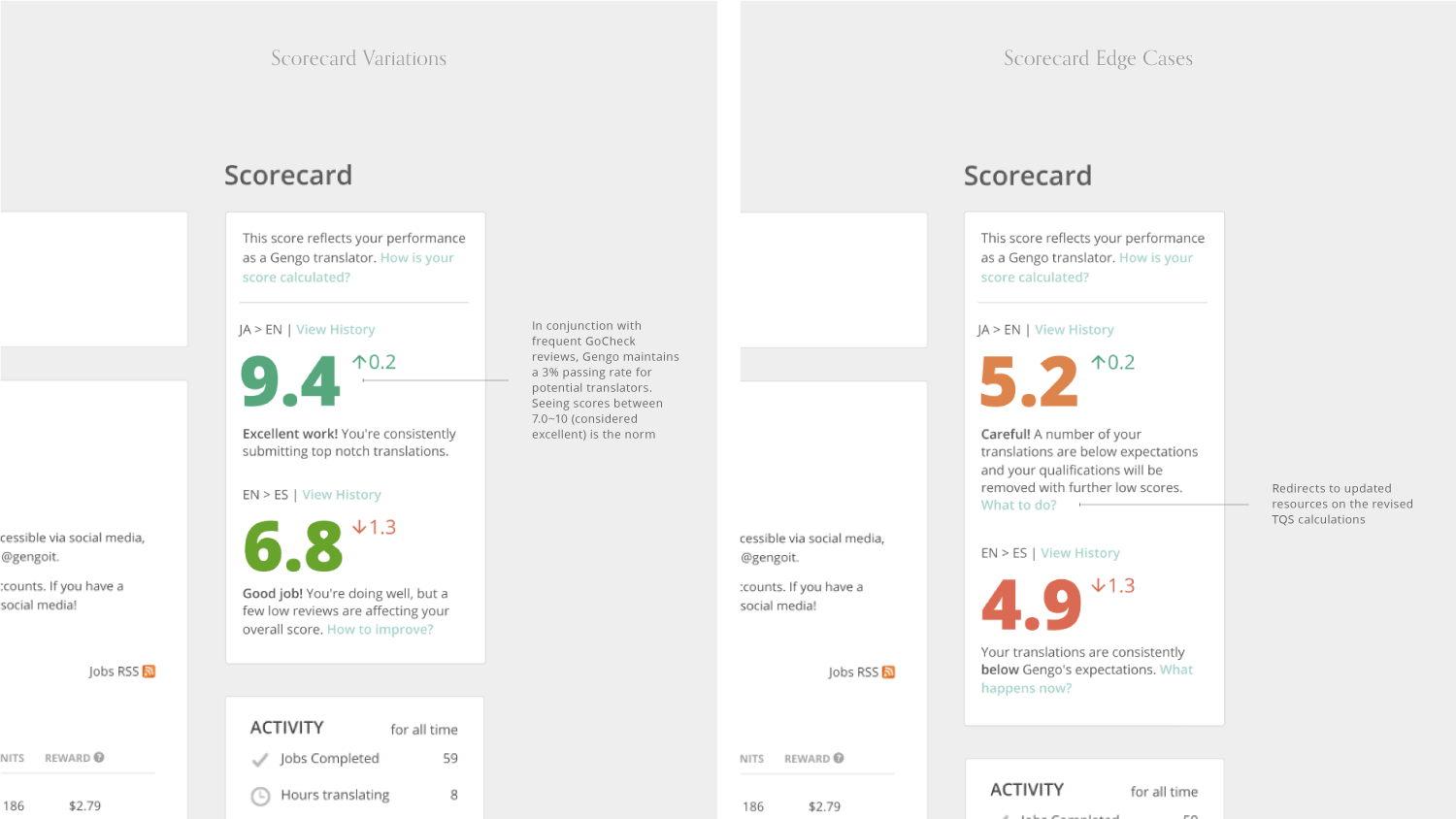
Development
Designing the GoCheck history page—that addresses earlier pains around translators not being able to understand their professional progression on our platform—was based on existing design components and patterns. Translators frequently interacted with tables to pick up jobs and review submitted translations.
As a starting point I felt tabling their previous GoChecks made visual and semantic sense; enabling scanning of content and creating a correlation between the severity of errors made and the corresponding GoCheck score.
The design principles of employing clarity over cleverness paid off when time came to test the redesigned scorecard and history page with translators. The majority commented on the ease in which it was to get a sense of their current score versus a previous one, and to then learn more by visiting their history page which captured a snapshot of their performance over time.
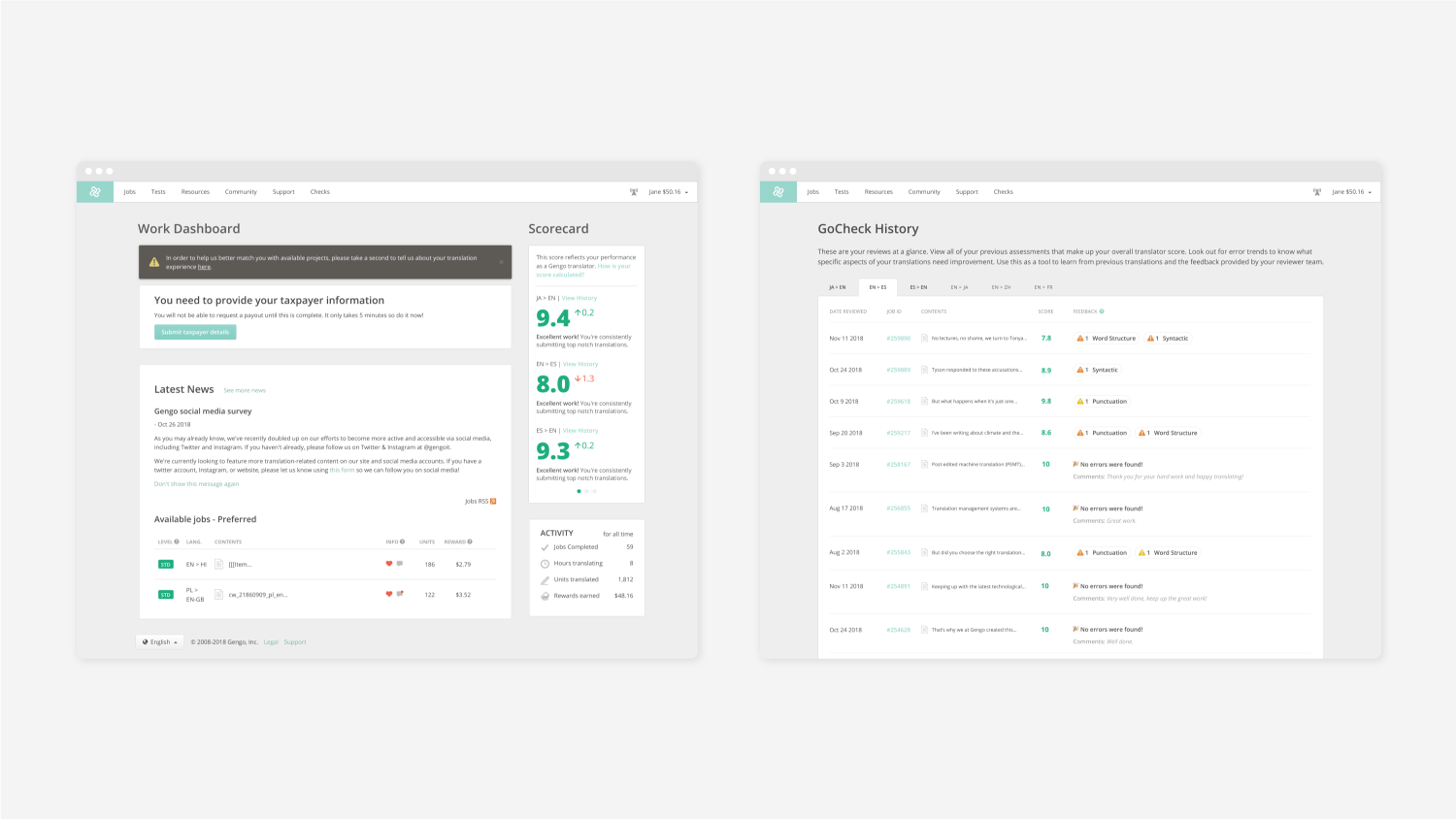
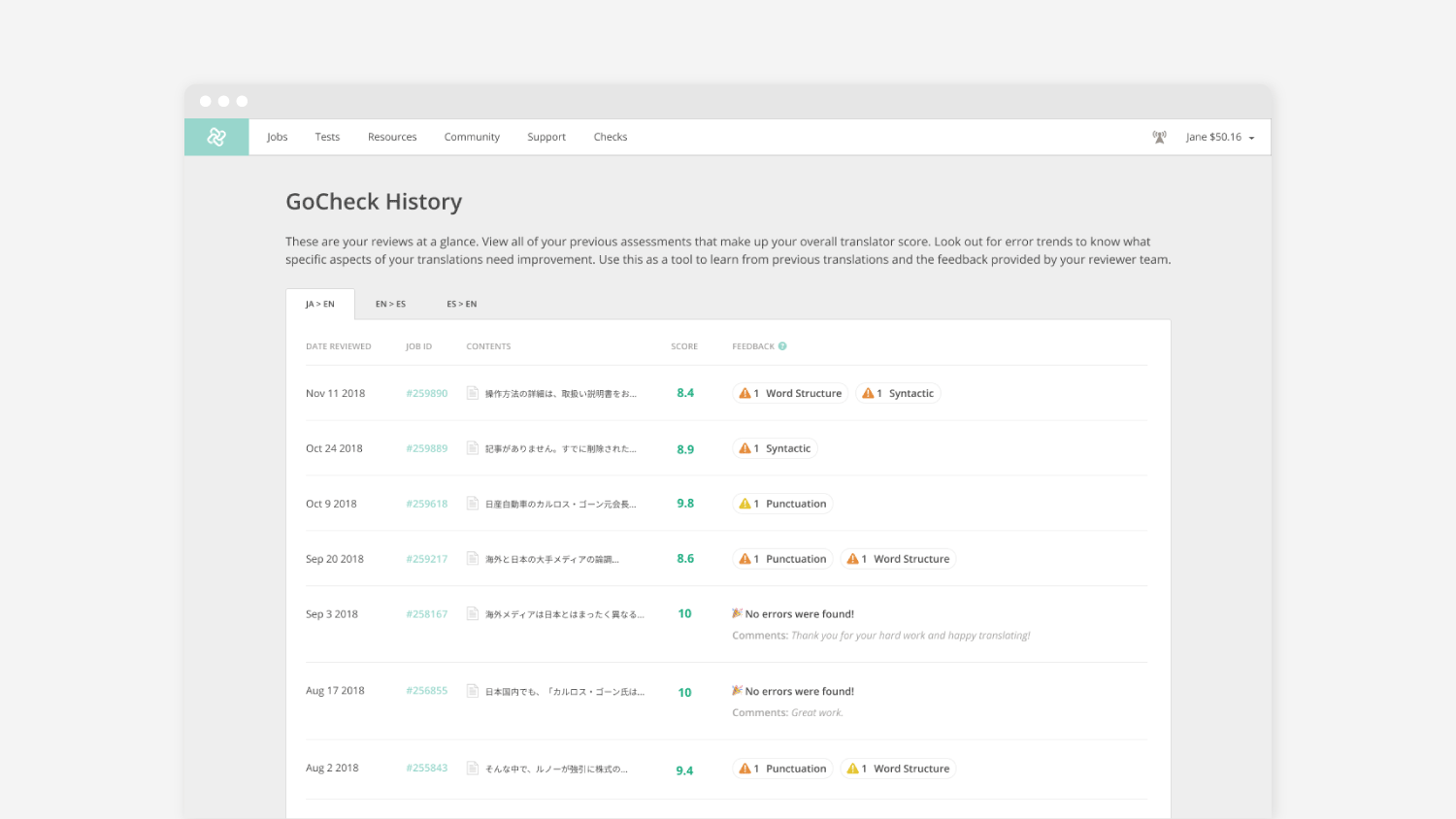
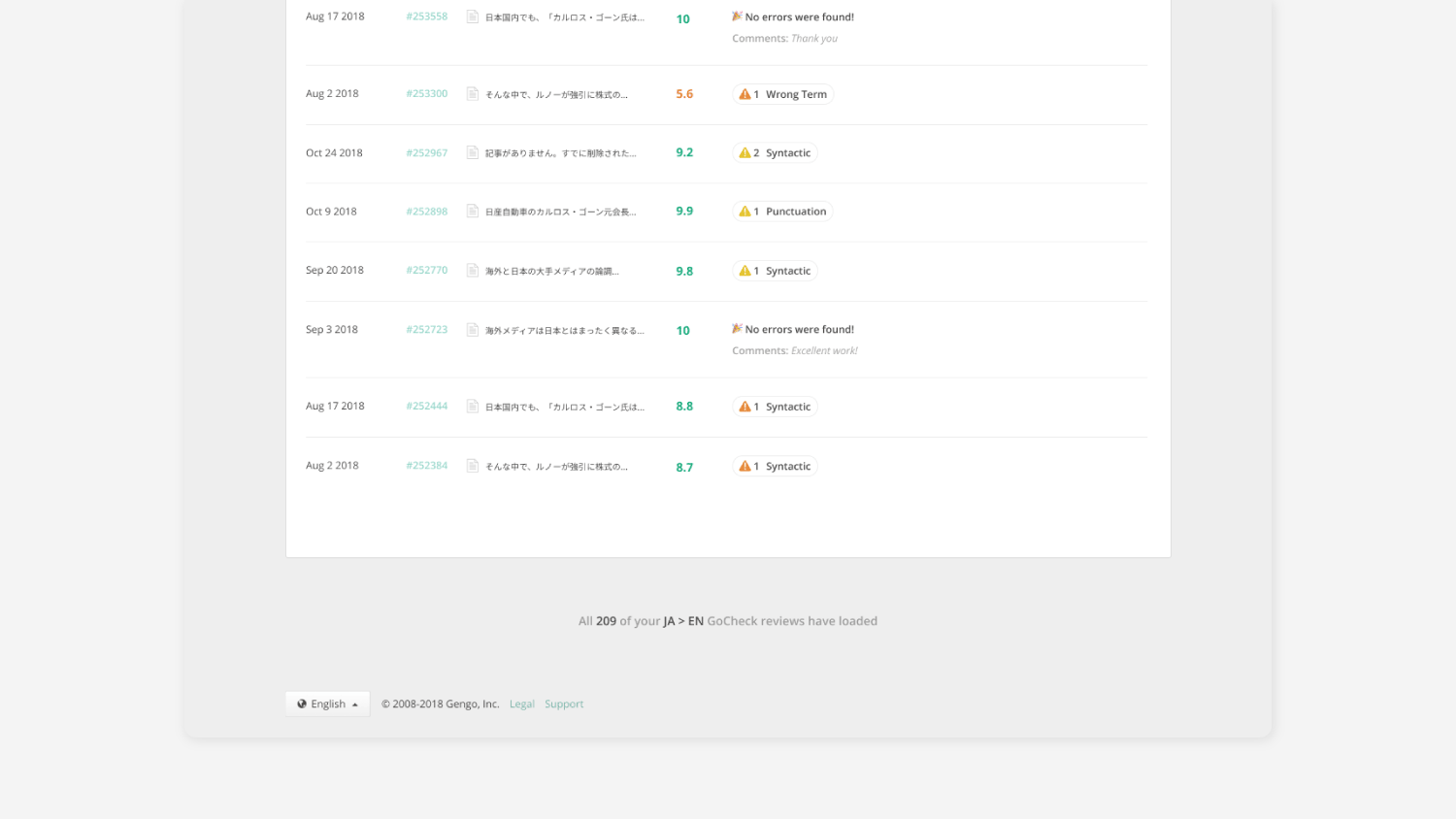
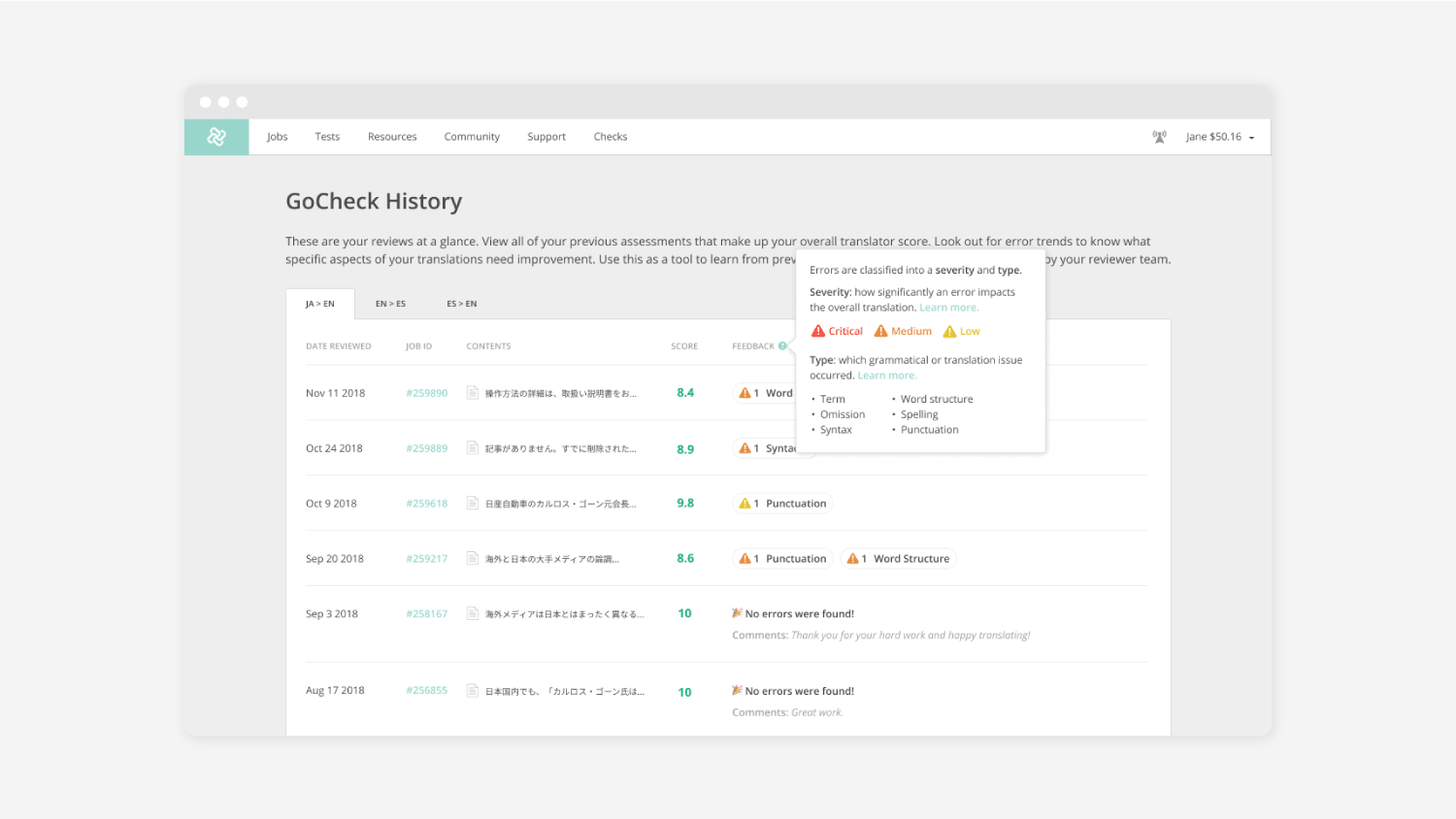

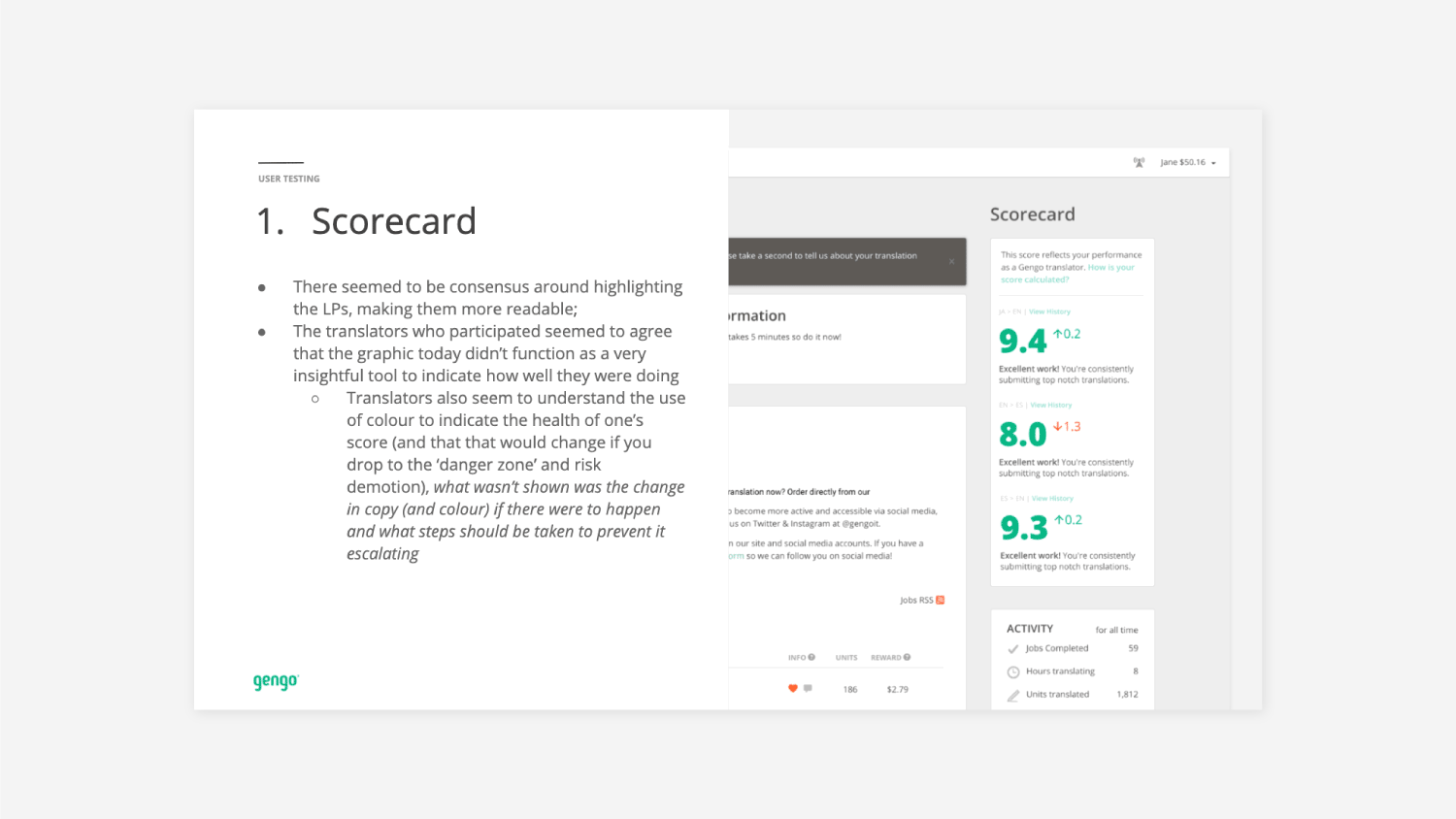
Development
The feedback we’ve received from implementing the new scorecard and history page were positive and reaffirming. And while there’s always room for improvement, it was very rewarding to be involved in bettering a fundamental component on our translator’s dashboard that has been long overdue.
“I think (the GoCheck History page is) very useful… It’s much easier to track everything. As a translator to see more of my scores is to want to better them” — Participant #4
“This history of feedback and scoring is new to me and I think that it’s a good thing, prior to this, I had to go back to my email to check. Having this page makes it very easy to check my progress” — Participant #5
Gengo
2018—19
Services
UX & UI Design
Team
Product: Charly Walther, Mike Stewart
Engineering: Mark Jezreel Dagot, Perseus Laguador
Translator Operations & UX Copy: Olga Kuchuk, Niko Wu
Design & UX Copy: Rainie Nguyen
Related projects
Cảm ơn nhé! Thanks for visiting. For business inquiries, feedback, and/or a chinwag, don't hesitate to email me directly, rae.n@live.com ☺︎
Acknowledgement of Country
I live and work on the lands of the Wurundjeri Woi-wurrung people of the Kulin Nation. I acknowledge elders past, present, and emerging, and recognise their abiding connection to this land, its waterways, and communities. Sovereignty was never ceded.
Attribution
Fun bits set in Ouroboros by Ariel Martin Pérez and Hélène Alix Mourrier, and Typefesse by Océane Juvin for Velvetyne Type Foundry.
© 2025 Rainie Nguyễn

